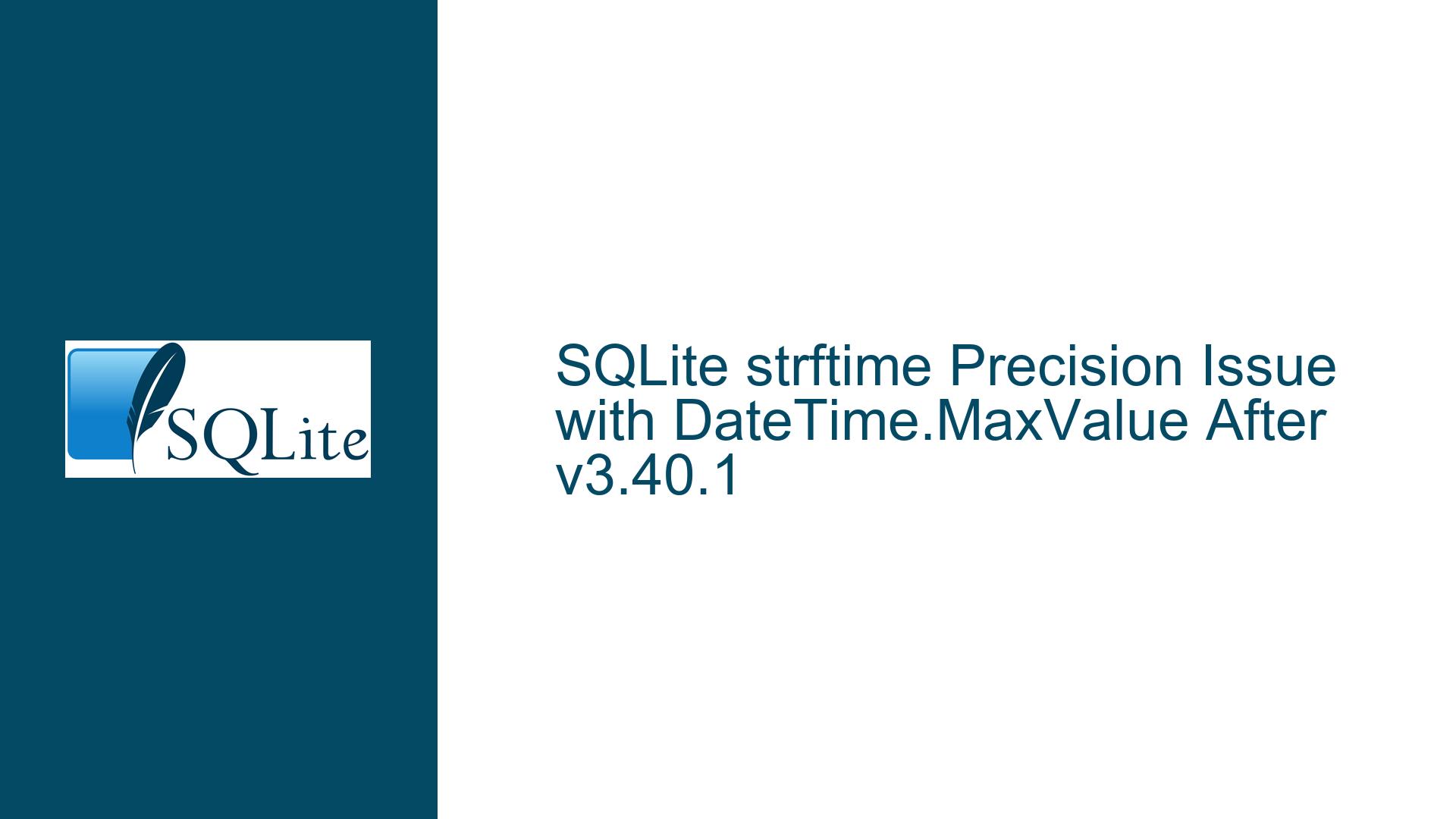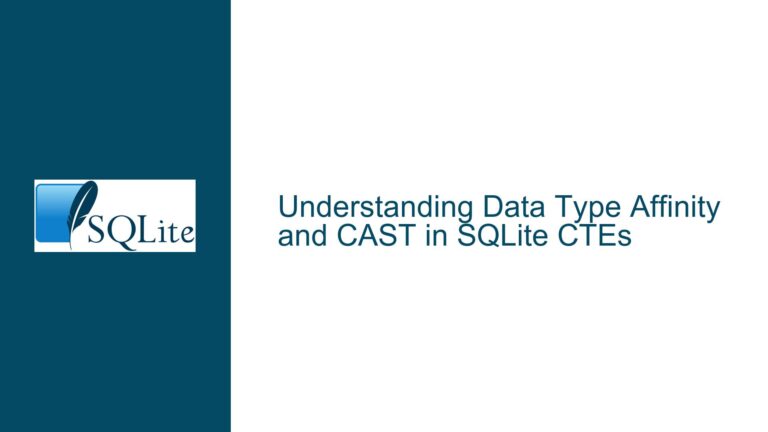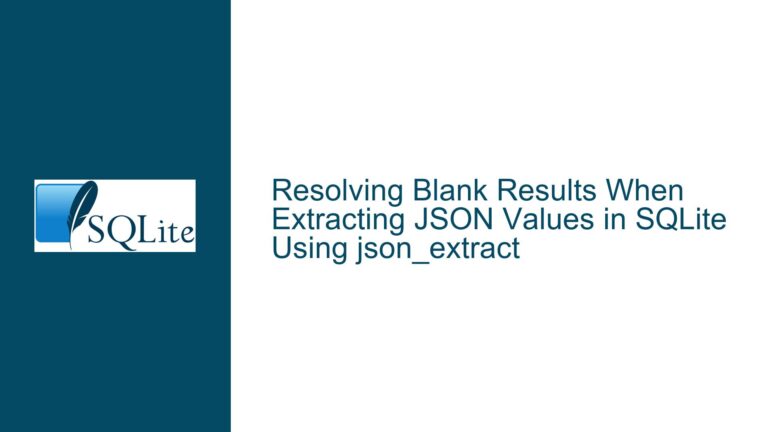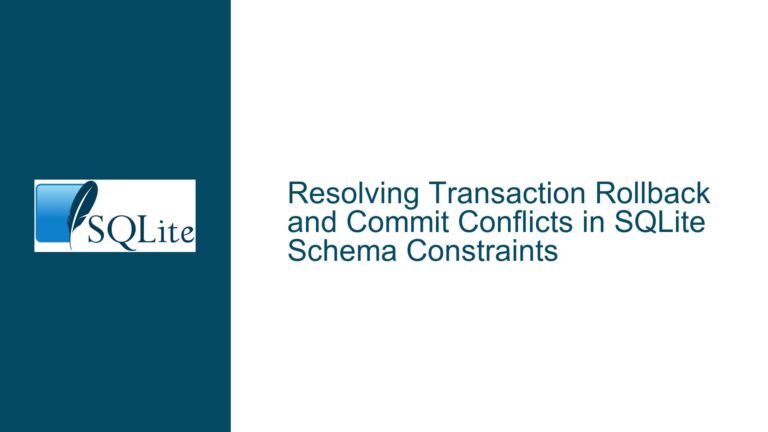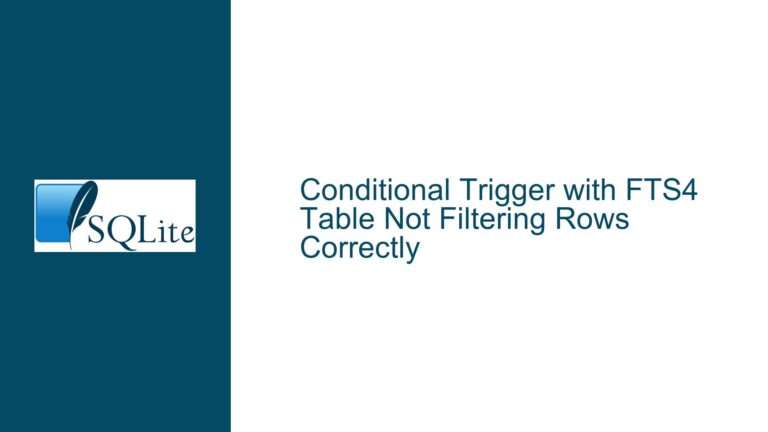SQLite strftime Precision Issue with DateTime.MaxValue After v3.40.1
Breaking Change in SQLite’s High-Precision Timestamp Handling
The SQLite database engine’s handling of high-precision timestamps underwent a significant behavioral change starting with version 3.40.1, particularly affecting applications using System.Data.SQLite in conjunction with .NET’s DateTime.MaxValue. This modification impacts the strftime function’s ability to process timestamps containing more than three decimal places for fractional seconds. The change manifests most notably when attempting to format dates using the strftime function with DateTime.MaxValue, which in .NET represents ‘9999-12-31T23:59:59.9999999’.
Prior to SQLite 3.40.1, the database engine would successfully process these high-precision timestamps, returning expected results even when presented with the full seven-digit precision of DateTime.MaxValue. However, the newer versions exhibit different behavior, returning null values when encountering timestamps with precision exceeding three decimal places. This behavioral shift occurred without explicit documentation in the release notes, creating potential complications for applications that relied on the previous functionality.
The timestamp handling mechanism in SQLite traditionally focused on millisecond precision (three decimal places), though earlier versions demonstrated more flexibility in accepting higher precision values. The current implementation appears to enforce stricter validation of timestamp formats, particularly when dealing with fractional seconds beyond the millisecond range.
Underlying Technical Constraints and Version-Specific Behaviors
The root cause of this behavioral change stems from multiple technical factors within SQLite’s datetime handling architecture. The System.Data.SQLite library versions correlate with specific SQLite engine versions, creating a clear demarcation point for this behavioral change:
Version Correlation and Behavior
System.Data.SQLite 1.0.116.0 pairs with SQLite 3.38.5, maintaining the original behavior of accepting high-precision timestamps. The transition to System.Data.SQLite 1.0.117.0, which incorporates SQLite 3.40.0, introduces the more restrictive timestamp handling. This version boundary marks the point where applications might experience unexpected null returns when using DateTime.MaxValue.
Internal Implementation Changes
The strftime function’s internal implementation appears to have undergone modifications affecting its timestamp parsing capabilities. While the documentation suggests support for variable precision in fractional seconds, the actual behavior in versions 3.40.1 and later contradicts this claim. The discrepancy between documentation and implementation indicates a potential oversight in maintaining backward compatibility.
Precision Handling Mechanics
The datetime processing in SQLite now exhibits stricter validation of timestamp formats, particularly when dealing with fractional seconds. The engine’s internal representation of time values appears to have been optimized for three-digit precision, leading to potential data truncation or rejection when encountering higher precision values.
Comprehensive Resolution Strategies and Implementation Guidelines
To address this timestamp precision issue, several robust solutions and workarounds can be implemented, each with its own considerations and trade-offs:
Timestamp Format Standardization
The most straightforward approach involves standardizing timestamp formats before passing them to SQLite’s strftime function. This can be achieved by implementing a custom formatting function that truncates or rounds the fractional seconds to three decimal places:
public string FormatSqliteDateTime(DateTime dateTime)
{
return dateTime.ToString("yyyy-MM-dd HH:mm:ss.fff");
}
Version-Aware Implementation
For applications that must maintain compatibility across multiple SQLite versions, implementing version-specific handling provides a robust solution:
public string GetFormattedDateTime(DateTime dateTime, string sqliteVersion)
{
Version version = Version.Parse(sqliteVersion);
Version breakingVersion = Version.Parse("3.40.1");
if (version >= breakingVersion)
{
return dateTime.ToString("yyyy-MM-dd HH:mm:ss.fff");
}
return dateTime.ToString("yyyy-MM-dd HH:mm:ss.fffffff");
}
Database-Level Mitigation
For scenarios requiring consistent behavior across different SQLite versions, implementing custom date formatting functions at the database level provides a reliable solution:
CREATE FUNCTION safe_strftime(format TEXT, timestamp TEXT)
BEGIN
RETURN strftime(format, substr(timestamp, 1, 23));
END;
Application Architecture Considerations
When designing new applications or updating existing ones, several architectural considerations should be taken into account:
DateTime handling should be centralized within a dedicated service or utility class to maintain consistent formatting across the application.
Version detection and appropriate formatting should be implemented during application initialization to avoid runtime formatting issues.
Error handling and logging should be enhanced to capture and report any timestamp-related formatting issues.
The long-term solution involves careful consideration of timestamp precision requirements and implementing appropriate handling mechanisms at various levels of the application stack. While the documentation suggests support for variable precision in fractional seconds, practical implementation should account for the three-digit precision limitation in current SQLite versions.
For applications requiring exact timestamp precision beyond milliseconds, alternative storage strategies should be considered, such as storing the high-precision component separately or using a different timestamp representation altogether. This approach ensures data integrity while maintaining compatibility with SQLite’s current timestamp handling capabilities.
